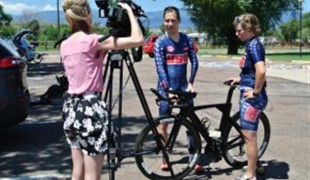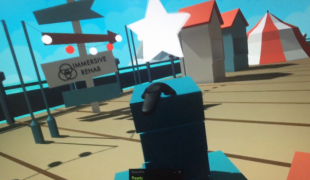- 11403
- 611
- 12
- 17
- 2
- Help Ukraine
About the solution
Utkarsh was motivated to create this device after seeing a video of Muhammad Ali lighting the Olympic torch at the Atlanta Olympic games, in 1996, despite his suffering of Parkinsons disease.
OneRing uses intelligent machine learning technology to monitor and measure tremors and Parkinson’s patients’ movements to help doctors and patients better understand their condition and determine what medications should be taken when to relieve symptoms efficiently. The device integrates a Bluetooth microship that connects to the phone via a mobile app. Utkarsh created an algorithm that lets the technology sense and classify body tremors and input the data into a detailed daily report.
The invention divides the tremors into three separate categories: dyskinesia, bradykinesia, and tremor. “With these classifications it can be packaged in these very coherent patient reports that the physicians and the patients can read and interact with in a way that better recommends medication,” the student observed.
The device is easy to use. The user just was to wear it throughout the day, and turn on the app. Then the reports are compiled and of easy access.
The student started the project in 2014, when he was in high school, for his science fair project. He got the first prize and received a grant from the UCLA Brain Research Institute. This allowed the inventor to keep working and improving his innovation. Later on he launched a Kickstarter campaign in order to start production of the monitoring ring and distribute it to Parkinson’s clinics.
Adapted from: http://bit.ly/2kQEeNL
More info: http://oneringforpd.com/
What about you, do you have any solutions? Please share them with the Patient Innovation community!
https://www.youtube.com/watch?v=O9X73FRCyto
这些解决方案不应包括使用药物,化学品或生物制品(包括食品);创伤性设备;冒犯性的,商业或内在危险的内容。该解决方案未经医学验证。请谨慎进行!如果您有任何疑问,请咨询健康专家。
DISCLAIMER: This story was written by someone who is not the author of the solution, therefore please be advised that, although it was written with the utmost respect for the innovation and the innovator, there can be some incorrect statements. If you find any errors please contact the patient Innovation team via info@patient-innovation.com
-
-
347
-
0
-
4265

Collaborator Pierluigi Mantovani creates Evolution Devices - solutions that aim to transform Multiple Sclerosis Management
CAREGIVING
BODY BALANCE: Maintaining body balance
STANDING UP: Standing up from a seated position
WALKING: Walking
Multiple Sclerosis
Assistive Daily Life Device (to help ADL)
Walking Aid (wheelchair/walker/crutches)
App (Including when connected with wearable)
AI algorithm
Body-Worn solutions (Clothing, accessories, shoes, sensors...)
Restoring mobility
Regaining sensory function
Managing pain
Promoting self-management
Preserving Organ Function
Managing Neurological Disorders
Maintaining Balance and Mobility
To improve Treatment/Therapy
Preventing (Vaccination, Protection, Falls, Research/Mapping)
Raise awareness
Caregiving Support
General and Family Medicine
Internal Medicine
Medical Genetics
Neurology
Physical Medicine and Rehabilitation
United States
-
-
-
494
-
0
-
6379

Woman invents 3D printed aid for paraplympic friend
BODY BALANCE: Maintaining body balance
Cycling
MOVING IN A WHEELCHAIR: Moving using a wheelchair.
Brain Stroke
Stroke
Spinal Cord and Nerve Root Disorders
Cervical spinal cord injury/Tetraplegia
3d Printed
Walking Aid (wheelchair/walker/crutches)
Body-Worn solutions (Clothing, accessories, shoes, sensors...)
Muscle cramps or spasms
Difficulty coordinating movements
Stiffness or rigidity (difficulty moving)
Paralysis of the legs and lower body
Muscle weakness
Loss of balance
Numbness or weakness in the legs
Unilateral leg swelling.
Restoring mobility
Replacing lost limbs
Managing Neurological Disorders
Maintaining Balance and Mobility
Cardiology
General and Family Medicine
Neurology
Sports Medicine
United States
-
-
-
413
-
0
-
4592

Helping people affected by neurological conditions live more independent lives again with our digital therapies for neurorehabilitation.
CAREGIVING
(SELF)-CARE: EATING: Eating independently.
(SELF)-CARE: DRINKING: Drinking independently.
(SELF)-CARE: HYGIENE: Maintaining personal hygiene
BODY BALANCE: Maintaining body balance
Multiple Sclerosis
Spinal Cord and Nerve Root Disorders
Stroke
Assistive Technology access
3d Printed
Treatment/Surgical device
Website
Muscle cramps or spasms
Difficulty coordinating movements
Stiffness or rigidity (difficulty moving)
Muscle weakness
Anxiety
Fatigue
Cold hands or feet
Restoring mobility
Rehabilitating After Stroke
Managing Neurological Disorders
Recovering from Traumatic Injuries
To improve Treatment/Therapy
Cardiology
General and Family Medicine
Intensive Care Medicine
Neurology
Physical Medicine and Rehabilitation
United Kingdom
-
 zh
zh
Mary Belinda • Wed, 07/07/2021 - 17:06